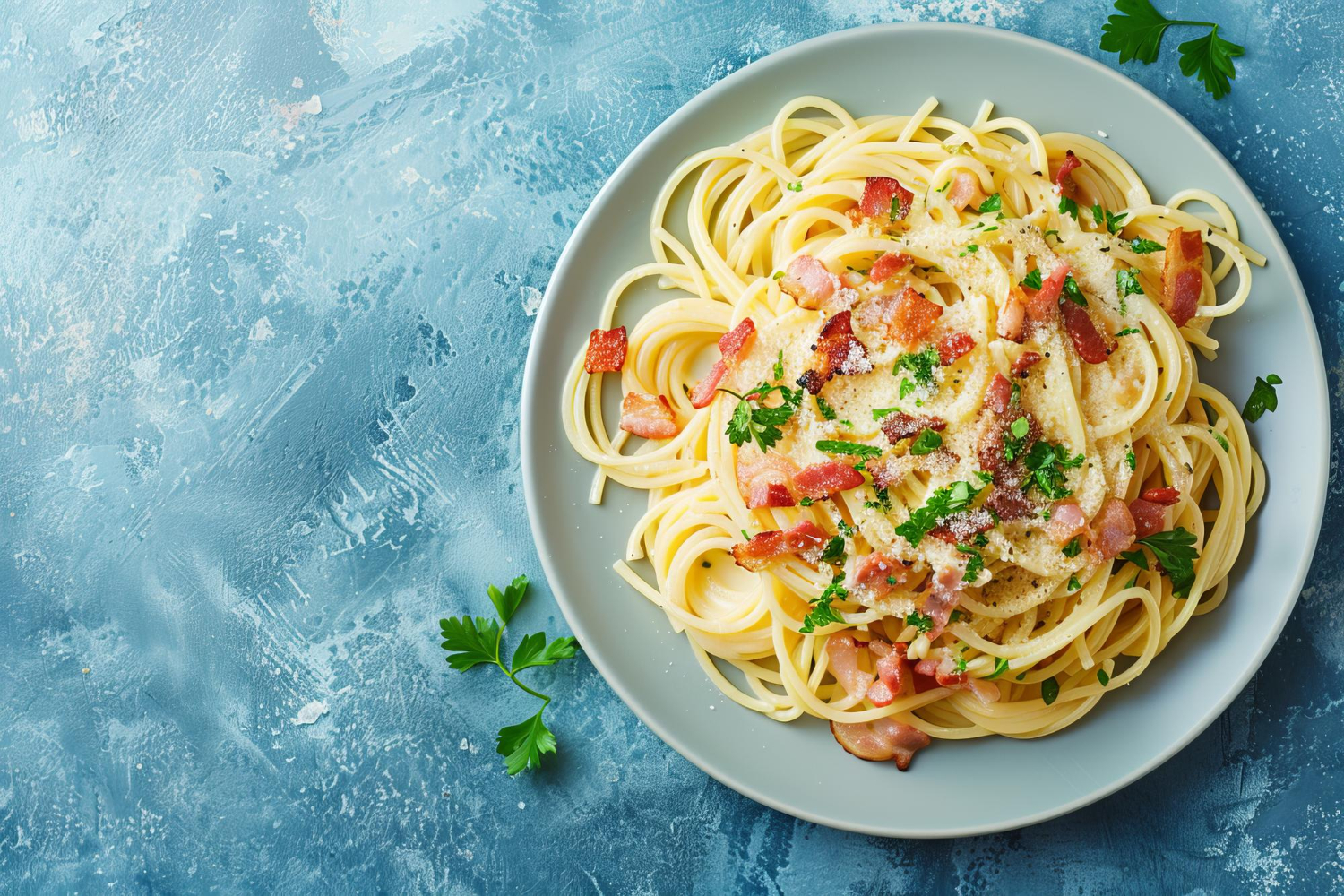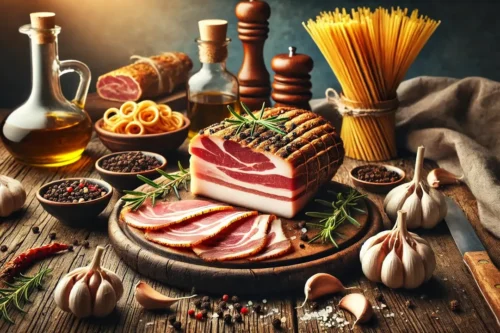Photo: Freepik
Introduction
Bread is much more than a simple food staple in Italy—it’s an integral part of the cultural identity and cuisine. While Italians may not consume as much bread as some other European countries, the bread they do eat is full of variety, flavor, and tradition. From the southern coasts of Sicily to the northern peaks of the Alps, Italy offers an array of unique regional breads, each reflecting the local ingredients, customs, and history. Whether you’re savoring a crunchy ciabatta or indulging in a sweet buccellato, Italian breads offer a window into the heart of this country’s food culture.
In this article, we will dive into some of the most iconic types of Italian bread, highlighting their origins, special characteristics, and how they are typically enjoyed in Italian cuisine.
Focaccia – Liguria
Focaccia is perhaps one of the most beloved Italian breads, originating from the coastal region of Liguria. Its dimpled, golden-brown surface is drizzled with olive oil and often sprinkled with herbs such as rosemary or thyme. The base dough is quite similar to pizza dough but is left thicker and has a spongier texture. Traditionally baked in wood-fired ovens, focaccia has a slightly crispy crust and a soft, chewy interior. It’s often enjoyed as an appetizer or side dish and can also be topped with vegetables, olives, or cheese for added flavor. Focaccia’s versatility and simplicity have made it popular beyond Liguria, spreading across Italy and abroad.
Pane Toscano – Tuscany
From the beautiful hills of Tuscany comes Pane Toscano, a bread with a rustic charm that sets it apart from most other varieties. What makes this bread unique is its saltless dough, a tradition that dates back centuries. During the Middle Ages, salt became a highly taxed commodity, so the Tuscans began baking their bread without it. This mild, unsalted bread perfectly complements the region’s saltier dishes, such as prosciutto and pecorino. Its dense texture makes it ideal for soaking up sauces, and it is often used for dishes like bruschetta or served with hearty Tuscan soups such as ribollita.
Ciabatta – Veneto
Ciabatta, a relatively recent addition to Italy’s bread repertoire, was invented in 1982 in the Veneto region. The name “ciabatta” means slipper in Italian, referring to the bread’s distinctive flat and elongated shape. Unlike some of Italy’s more traditional breads, ciabatta has a crisp crust and a very open crumb structure, thanks to the high hydration of the dough. Its light and airy texture make it perfect for sandwiches, especially when paired with cured meats and fresh mozzarella. Ciabatta’s popularity has grown far beyond Italy, making it a staple in bakeries worldwide.

Photo: Freepik
Pane di Altamura – Puglia
Pane di Altamura, from the town of Altamura in the southern region of Puglia, is one of the most esteemed breads in Italy, earning Protected Designation of Origin (PDO) status. This ancient bread is made from durum wheat semolina, giving it a distinctively golden-yellow crumb and a thick, crunchy crust. Traditionally baked in wood-fired ovens, Pane di Altamura has a long shelf life, which made it a staple for farmers and shepherds in the past. Its hearty texture and rich flavor make it a perfect accompaniment to soups, cheeses, and cured meats, or simply drizzled with olive oil.
Grissini – Piedmont
Originating from the Piedmont region in northwestern Italy, grissini are long, thin breadsticks that have become a beloved appetizer in restaurants across the country. Grissini were first created in the 17th century, and their crispy, airy texture makes them perfect for pairing with dips, olives, or cured meats. While traditionally plain, modern variations of grissini may include herbs, seeds, or even cheese. Their light, crunchy texture provides a contrast to richer Italian dishes and makes them a perfect snack.
Piadina Romagnola – Emilia-Romagna
Piadina Romagnola is a soft, thin flatbread from the Emilia-Romagna region, traditionally cooked on a terracotta pan. This bread has humble origins as a peasant food but has since become a celebrated part of the region’s cuisine. It is typically filled with an array of local ingredients, such as prosciutto, squacquerone cheese, and arugula, making it a perfect street food or quick meal. Its flexibility and mild flavor allow it to be paired with both savory and sweet fillings, contributing to its widespread popularity.
Coppia Ferrarese – Emilia-Romagna
Another bread from the Emilia-Romagna region, Coppia Ferrarese, stands out for its intricate, twisted shape and rich history, dating back to the 12th century. This bread is made from four strands of dough twisted together and has a crisp crust and a slightly chewy interior. Lard is often used in its preparation, giving it a distinctive flavor that pairs well with the region’s cured meats and cheeses. Coppia Ferrarese has been awarded Protected Geographical Indication (PGI) status, ensuring that it is made according to traditional methods in the province of Ferrara.
Pane Carasau – Sardinia
From the island of Sardinia comes Pane Carasau, a traditional flatbread known for its ultra-thin, crispy texture. Often referred to as “music paper” because of its delicate, crackly surface, this bread was originally made for shepherds who needed a bread with a long shelf life. Pane Carasau is typically served with olive oil and salt, but it can also be used as a base for more elaborate dishes like pane frattau, where it is layered with tomato sauce and poached eggs. Its light, crisp texture makes it a unique addition to any meal.
Brioche col Tuppo – Sicily
Sicily is home to Brioche col Tuppo, a sweet, soft bread that is often served with granita or gelato. This Sicilian version of brioche is distinct because of its “tuppo”—a small, rounded top knot. Traditionally enjoyed as a breakfast item during the hot summer months, this bread is made with butter, sugar, and sometimes flavored with citrus zest or vanilla. Its rich, buttery flavor makes it a perfect treat to accompany a cold dessert or coffee.
Friselle – Puglia
Friselle are twice-baked bread rings from Puglia, designed to last for long periods. The crunchy texture softens when soaked in water or olive oil, making friselle an ideal base for toppings like tomatoes, basil, and garlic. This bread is a staple in Pugliese households and is often used in traditional dishes like frisella Salentina. Its robust texture and ability to absorb flavors make it a versatile and beloved part of the local cuisine.
Buccellato di Lucca – Tuscany
This sweet, ring-shaped bread, Buccellato di Lucca, comes from the Tuscan city of Lucca. Traditionally made for celebrations, it is filled with raisins and anise seeds, giving it a distinct flavor. The bread dates back to the Renaissance, when it was a luxury item served during important events, but today it’s enjoyed year-round. With its sweet and spiced flavor, buccellato makes for a delightful dessert or snack alongside a glass of wine or coffee.
Certosino – Bologna
Another festive bread, Certosino is a traditional Christmas sweet from Bologna. Made with a rich dough of honey, almonds, pine nuts, and dried fruits, this bread has a dense texture and is often flavored with chocolate or spices. Certosino is typically prepared during the holiday season, but its decadent flavor makes it a year-round favorite for those who enjoy sweet breads.
Torta al Testo – Umbria
In the heart of Umbria, you’ll find Torta al Testo, a type of flatbread cooked on a griddle. Its name comes from the pan, or “testo,” on which it is traditionally prepared. This bread has a thick, dense texture and is often stuffed with prosciutto, cheese, and greens. It’s a rustic and satisfying meal that highlights the simplicity and heartiness of Umbrian cuisine.
Conclusion
Italy’s bread tradition is as diverse as its regions, with each type of bread offering a glimpse into the local customs and flavors. Whether you’re enjoying a slice of crispy pane di Altamura with olive oil or indulging in a sweet bite of buccellato, Italian breads are more than just a side dish—they are a reflection of centuries-old culinary practices and regional pride. From the mountains of the north to the coastal regions of the south, Italian bread is a celebration of the country’s rich and varied food culture. Each bite tells a story, connecting modern-day meals to the ancient traditions that shaped them.
Source: Flavoursholidays.co.uk (link)















